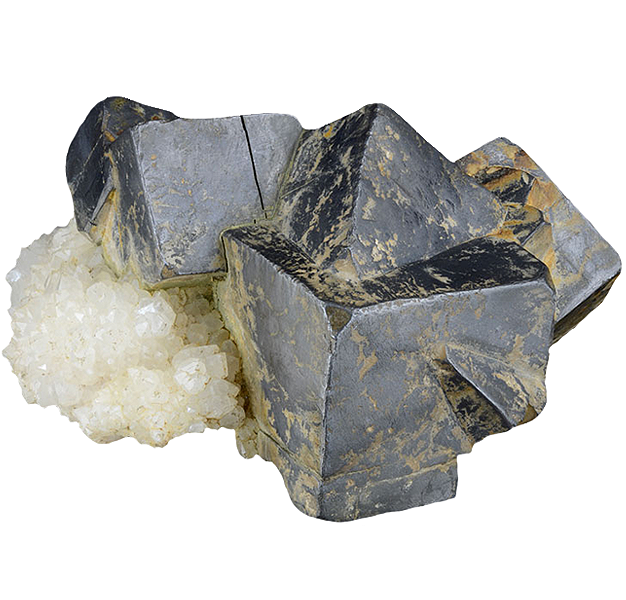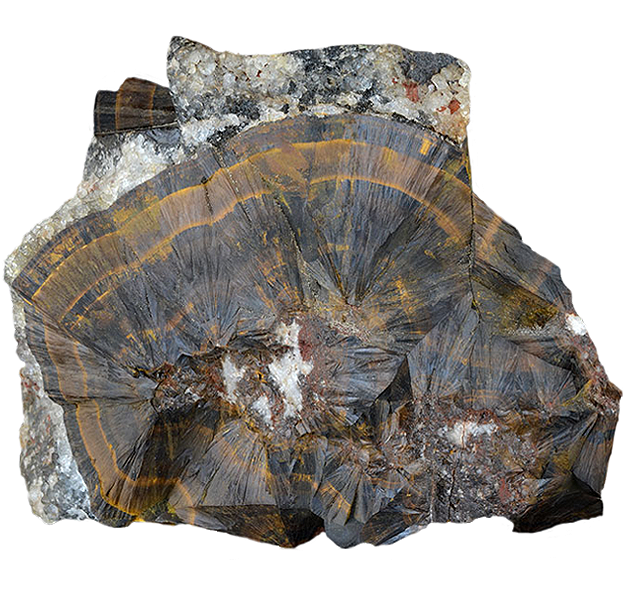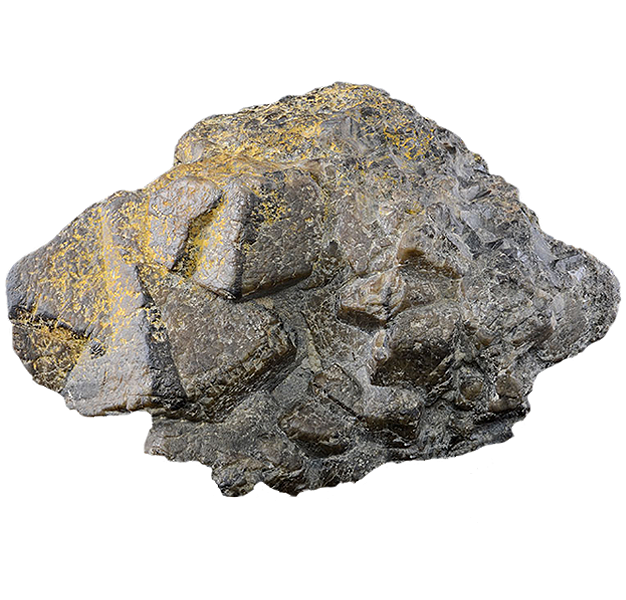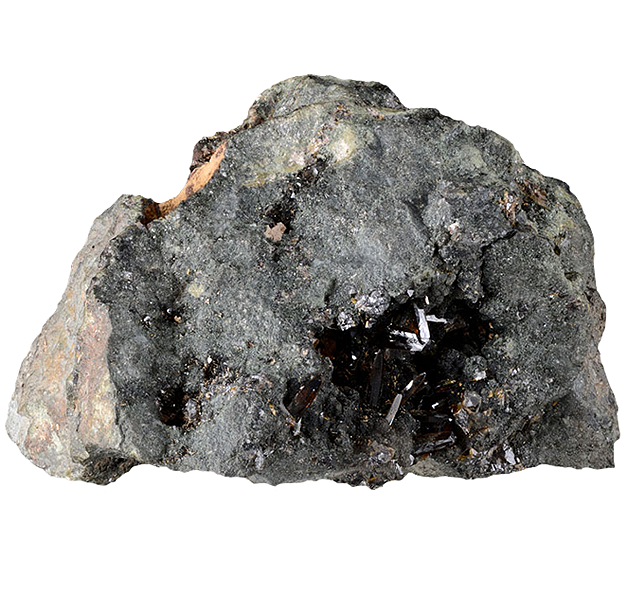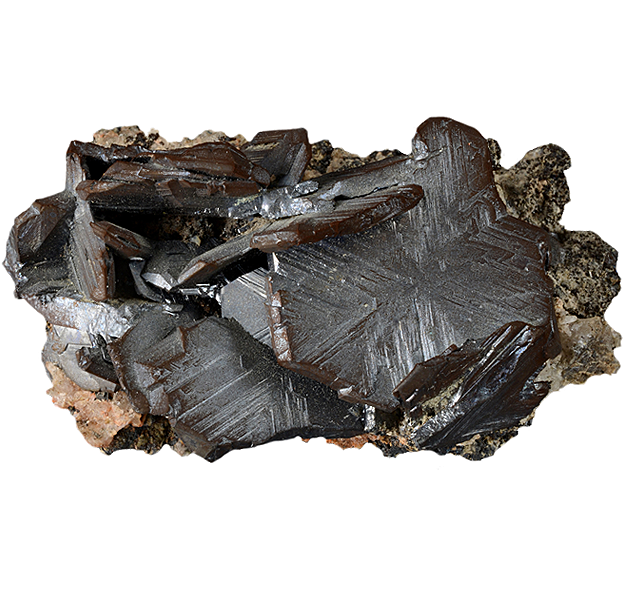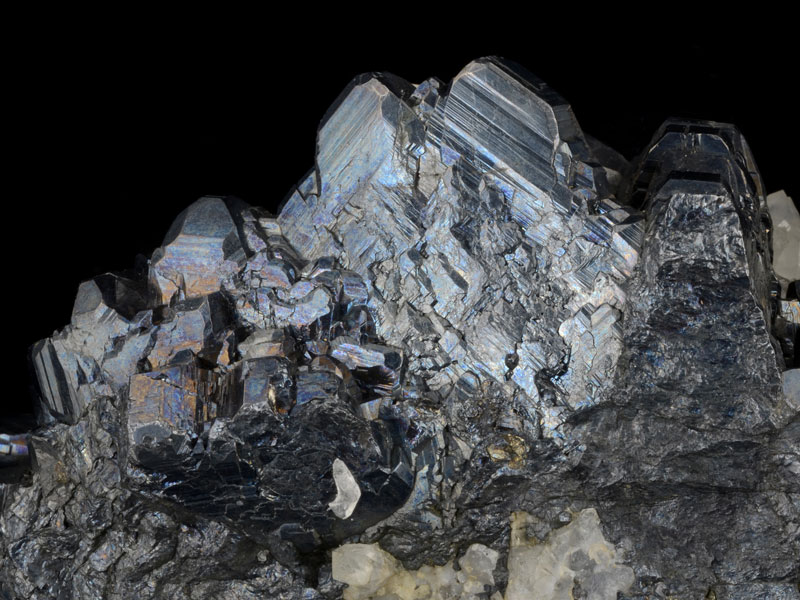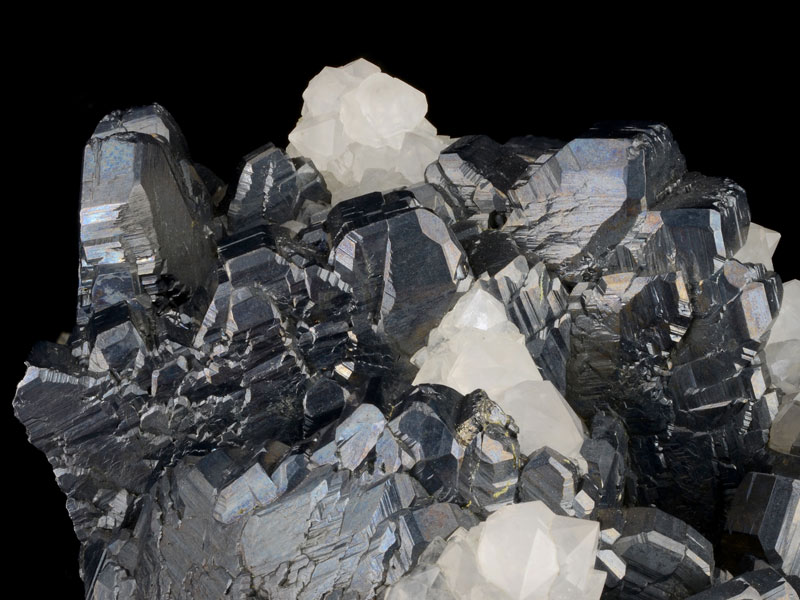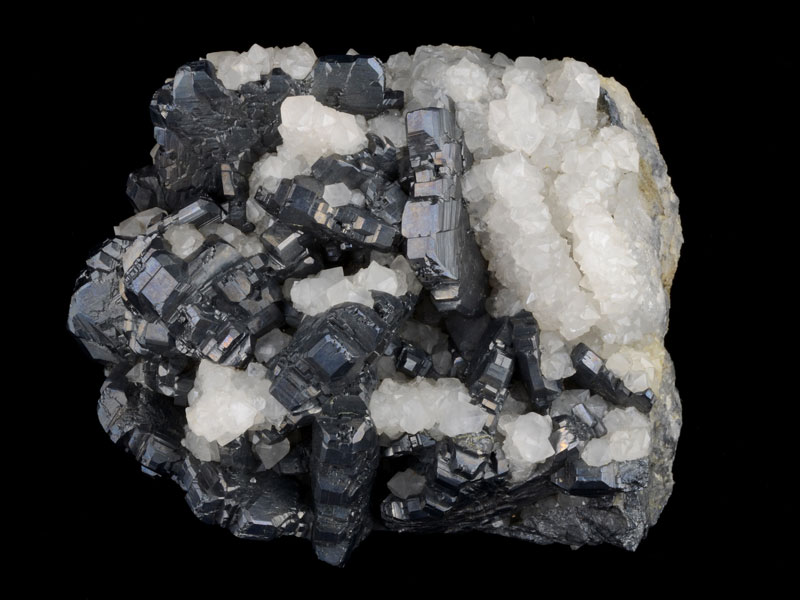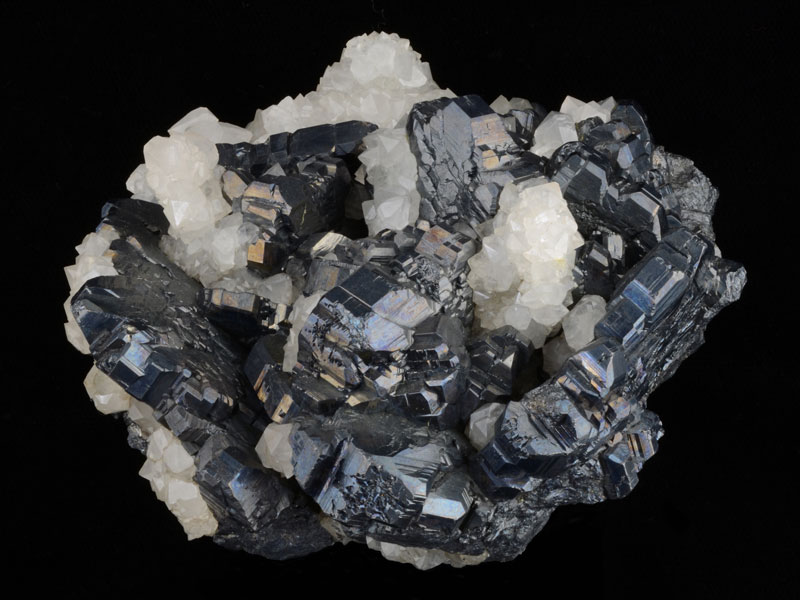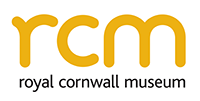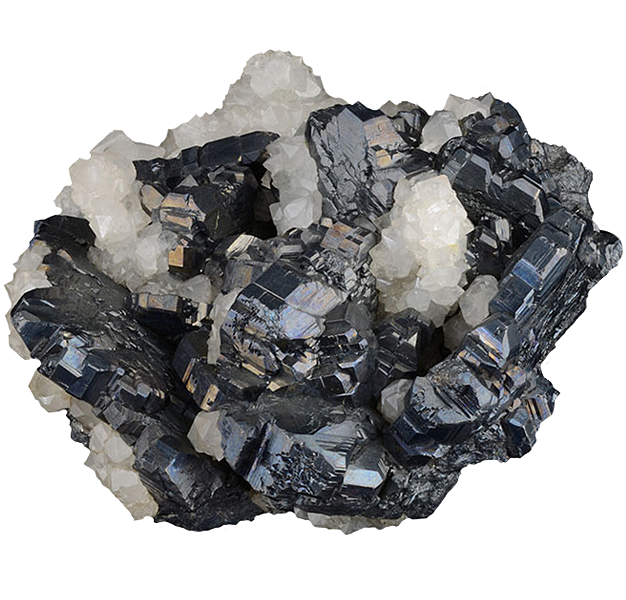
Fact sheet
Bournonite is a complex sulphide mineral containing copper, lead and antimony. It was first described in 1797 by Cornish gentleman-collector Philip Rashleigh, who included illustrated descriptions of two specimens in his publication Specimens of British Minerals. These specimens came from Wheal Boys, an antimony mine in St Endellion parish.
In 1858, spectacular specimens of bournonite with distinctive ‘cogwheel-shaped’ crystals, were found at another Cornish mine, Herodsfoot, a lead and silver mine a few miles east of Lostwithiel. Lostwithiel-based mineral dealer Richard Talling acquired the best of these specimens from the local miners and sold them on to mineral collectors and museums worldwide. This Herodsfoot specimen was almost certainly acquired by the Royal Institution of Cornwall in December 1858, one of a group of specimens purchased from Richard Talling for £8.10s.
Chemical Formula: PbCuSbS
Specimen no. TRURI: 801.908
Location: Herodsfoot
Grid Reference: SW 212 600
Mindat http://www.mindat.org/min-741.html
This Collection focuses on Cornwall and West Devon’s mineralogical and mining heritage. The specimens it features are drawn from the collection of the Royal Institution of Cornwall (RIC) held at the Royal Cornwall Museum (RCM).
This collaborative project involving the RCM, the Cornish Mining World Heritage Site and The Open University explores how access to the RIC’s mineral collection and the stories it can tell can be widened using digital technology. It includes radioactive minerals from Cornwall that would otherwise be inaccessible to the public for health and safety reasons.
Sample details
More from this collection
